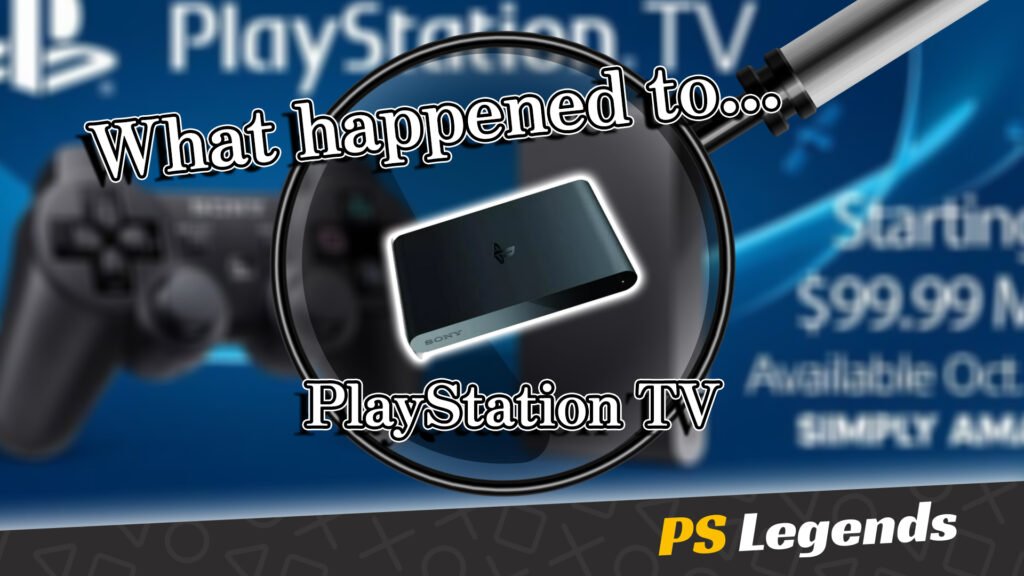Little Console, Big Screen
The PlayStation TV (usually abbreviated to PS TV), known in Japan and other parts of Asia as the PlayStation Vita TV or PS Vita TV, is a microconsole and a non-handheld variant of the PlayStation Vita. The name was altered for the Japanese audience to avoid confusion as “PlayStation TV” was the name given to PlayStation 3 retail kiosks from 2006 to 2014 which consisted of a PS3 unit, the required number of controllers and an LCD monitor.
The PS TV was released in Japan on November 14th, 2013, and the western release would follow a year later, in 2014. The PS TV console is controlled with either the DualShock 3 or DualShock 4 controller, and is capable of playing PlayStation Vita games and other applications, either through physical cartridges or downloaded through the PlayStation Store.
Not all Vita games are compatible with the device, since certain features of the PS Vita such as the gyroscope and microphone are not available on the PS TV. However, the PS TV is able to emulate the Vita’s touch inputs by using the PS3 and PS4 controller’s own touchpads. The console itself measures 6.5 cm by 10.5 cm, about the size of a pack of playing cards.
Andrew House, CEO of Sony Computer Entertainment, explained that Sony hoped to use the PS TV to infiltrate the Chinese gaming market, where video game consoles were previously prohibited, though microconsoles would usually slip under the radar.

Features
The PS TV would release at a budget price, taking into consideration that a HDMI-compatible TV screen, memory card and controller were sold separately, while staying inline with other microconsoles available at the time, such as the Android-based Ouya. The device is compatible with over 100 PS Vita games, as well as various digital PSP and retro PlayStation titles, along with a selection of PlayStation 3 titles streamed from the PlayStation Now service.
System software update 3.15 was released on April 30th, 2014, which enabled PS4 remote play functionality for the PS TV. In October 2014, the system was updated so that it could be used with PlayStation Network accounts originating from outside the original launch territories of Japan and Asia following the release of system software firmware version 3.30 update. Open beta trials for PlayStation Now functionality on the PS TV began on October 14th, 2014 in North America, the same day that PS TV was released there.
The system supports Remote Play compatibility with the PlayStation 4, allowing players to stream games from the PlayStation 4 to a separate TV connected to a PS TV, and also allows users to stream content from selected video services, as well as access the PlayStation Store. PS4 Remote Play functionality for the PS TV gained full support with the release of the 1.70 PS4 firmware update. The device includes the software features of the PS Vita, such as the web browser and file manager.

Missing In Action
While 2015 would see updates and new features added to the PS TV, European players would notice that the PlayStation Store was not being updated. Users could find new releases by using the Store’s search function, however new releases would no longer be highlighted on the Storefront, with the last advertised ‘new’ release being Hyperdimension Neptunia U: Action Unleashed, released back on 28th August 2014, before the western release of the PS TV. PlayStation Store Sales would not be advertised at all, though prices would be reflected accordingly.

By the end of March 2015, Sony had dropped the price of PlayStation TV by 40% in Europe. That same week, sales increased by 1272%. On February 28th, 2016, Engadget reported that Sony has stopped shipping the PlayStation TV in Japan. Sony confirmed shipments were actually discontinued in the Americas and Europe at the end of 2015, however they would continue in Asia contrary to reports, at least for a while longer.
An Illegal Revival
Critics called the device an amazing invention, praising the opportunity to play Vita and PSP games on the big screen. Others called the PS TV the perfect accompaniment to the PS4. Various commentators have compared the device to set-top boxes, including media streaming devices and other microconsoles. The console could confidently compete against set-top box competitors with a quality library of games.
The PlayStation TV, along with the PlayStation 4, won the 2014 Good Design Award from the Japan Institute of Design Promotion. The PlayStation TV sold 42,172 units during its debut week of release in Japan, where it was heavily marketed alongside God Eater 2 which was released on the same day as the device, and placed at the top of the Japanese software sales charts for that week.

However, at launch, the game library was limited to just a subset of PS Vita games, which impacted early reviews somewhat negatively. Journalists criticised the platform’s lack of compatibility with the Vita’s overall software library. The omissions included some of the Vita’s heavy-hitters and ports of PlayStation 3 games that didn’t work on the PS TV as previously expected.
In 2015 and 2016, hackers found ways to overwrite the PS TV’s ‘Whitelist’ to allow any Vita game to load. While all games would load, compatibility issues persist in certain Vita games reliant on touch and motion controls. For example, Uncharted: Golden Abyss is playable up until any mini-game prompting the player to tilt the Vita from side to side in order to balance Nathan Drake as he crosses a log.
For the most part, the Whitelist hack was well received by journalists, as many other games were playable from start to finish. Assassin’s Creed III: Liberation, Call of Duty: Black Ops Declassified, Hatsune Miku: Project DIVA F, Silent Hill: Book of Memories and Gravity Rush were among the titles compatible with the hack. Interestingly, Netflix also became compatible with the hack. Netflix was a curious case for the PS TV since the app worked on the Vita but was broken for the PS TV; a misstep for a set-top box-like device.

What Went Wrong?
Initially, the PS TV looked like a great deal for gamers because its library of PS Vita titles was arguably superior to those found on Android-based set-top boxes like Amazon’s Fire TV. The addition of Remote Play essentially made it a second PS4, while PS Now turned it into a cloud-based PS3.
Unfortunately, there were two major problems. Firstly, full PS Vita titles generally cost $20 to $40, while Android games on set-top boxes were either free-to-play or cost less than $10. That price difference meant that ‘casual’ gamers were less inclined to buy full-priced games for the PS TV. Having to also pay out for PS Vita Memory Cards which are expensive and monopolised, meaning no cheaper alternatives are available, meant that getting the full potential out of the microconsole would be a costly endeavour.
Secondly, the PS Vita was never actually a popular console, contrary to belief. According to market tracker Vgchartz, Sony has sold 13.4 million PS Vitas over its first four years, considerably fewer than the 80.8 million PSPs it sold between 2004 and 2014. That smaller audience instantly limited the PS TV’s appeal, because gamers were more likely to buy the PS TV if they already owned PS Vita games.
PS4 Remote Play and PS Now were promising upgrades for the PS TV, but they weren’t exclusive to the console. High-end Xperia smartphones and tablets also gained Remote Play support, while the PS Vita, PS3, PS4, Bravia TVs, and select Samsung TVs were all connected to PS Now. Therefore, owners of any of those devices didn’t really need to buy a PS TV, though technically it would be the cheapest way for gamers to play cloud-based PS Now titles. Sony also pulled the plug on the PS TV before it added planned support for PS1, PS2, and PS4 games available on PS Now.
Perhaps then, it’s safe to say that the failure and discontinuation of the PS TV, while undeserved, is simply a sign of the times. With handheld console gaming switching from established consoles to mobile and tablet gaming at lower costs to consumers, handheld consoles and their companion microconsoles, including the PS TV and even the PS Vita itself, are sadly past their prime.



